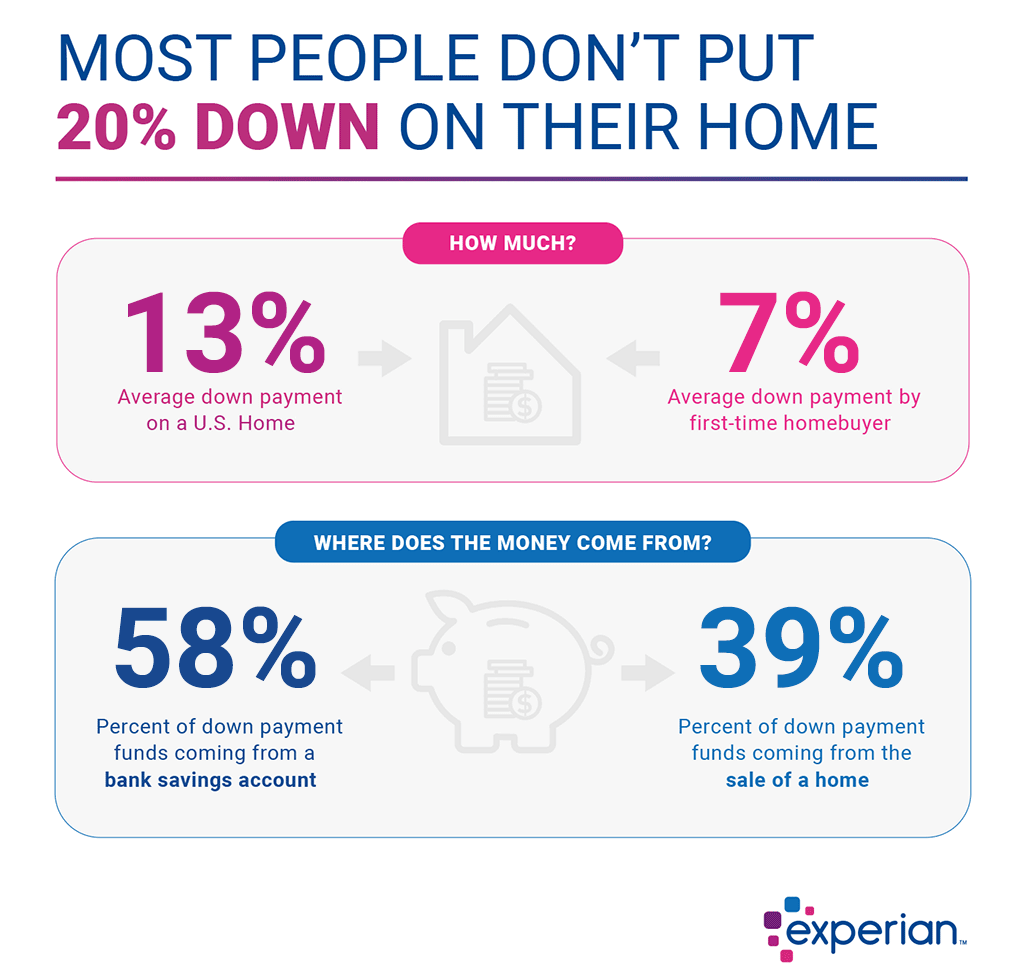In this article:
When determining how much to save for a down payment on a home, setting aside as close to 20% of the home's purchase price as possible is ideal. This way you'll pay less in interest and fees and start out with more equity in your home.
But many homebuyers, especially first-time buyers, make down payments of less than 20%. And you may be able to put as little as 3.5% down, for instance, with a loan from the U.S. Federal Housing Administration (FHA).
Here's how to decide how much to save for a down payment, taking into account the lender's requirements, your financial standing and whether you qualify for certain homebuyer programs.
How Much Do You Need for a Down Payment?
The more cash you put down, the smaller the loan you'll need and the less interest you'll pay. Plus, lenders like to see down payments of 20%, since it may demonstrate that you have strong cash flow and the ability to save consistently over a period of time.
But in reality, a 20% down payment is often difficult for homebuyers to come up with—and may not even be necessary.
Do You Need to Have a 20% Down Payment?
Let's start with the benefits of a higher home down payment, which are substantial. With 20% down, you'll have access to:
- A cleaner path to loan approval: You increase your chances of mortgage approval with a bigger down payment, as lenders will likely view you as a good saver, and thus a lower credit risk.
- Lower mortgage rates: Since a higher down payment reduces your loan-to-value ratio, or the loan amount compared with the home's value, you can usually get lower interest rates from lenders. Any hike in the amount of a home down payment lowers loan-to-value ratio while also reducing risk to the lender.
- You'll likely pay off your mortgage sooner: The more cash you can put down, the lower your loan amount. That makes it more likely you can pay off your entire mortgage sooner, saving you interest and letting you build equity more quickly.
- A lower monthly mortgage payment: A larger home down payment cuts your monthly mortgage bill, leaving you with extra cash for other financial considerations, like college or retirement savings.
- No mortgage insurance: By steering more cash into a home down payment, you can avoid paying private mortgage insurance (PMI). When you put less than 20% down, your lender will likely require you to pay PMI, which it may charge as an upfront free or as part of your monthly payment. This protects the lender if you can't pay your mortgage. Private mortgage insurance can be pricey—up to 1% of the entire loan amount on an annual basis, in many cases. On a $200,000 home loan, that means almost an extra $200 per month saved by not having to pay PMI.
What Is the Average Down Payment?
Despite the advantages of making a down payment of 20%, it's common for buyers to put down less. The median down payment among all homebuyers in 2018 was 13%, according to the National Association of Realtors. First-time buyers put a median of 7% down. Repeat buyers put down the most, at 16%.
 1 Realtor.com, 2 NAR
1 Realtor.com, 2 NAR
What Is the Minimum Down Payment?
While down payment obligations vary from lender to lender, and primarily depend on your credit health and debt-to-income ratio, most traditional loans require at least 5% down.
Homebuyers, especially cash-strapped first-time buyers, have additional options, though. For example, conventional loans are available through traditional lenders for less than 5% down. U.S. Federal Housing Administration (FHA) home loans are easier to get than traditional loans and require the borrower to put down only 3.5% of the home's value. If you're a veteran or service member, you could pay 0% down and no private mortgage insurance for a home loan through the U.S. Department of Veterans Affairs.
Plus, many states and municipalities have first-time homebuyer programs that provide down payment assistance. Contact your state's housing finance agency to find out about programs in your area.
When you're considering the minimum down payment you're willing to make, think through whether putting less down is a reflection of your readiness to buy a home. While it's possible to obtain a loan with little to nothing down, you should still have savings on hand before purchasing a home and the income to pay your mortgage as well as the other costs of owning a home. Using money from your retirement savings or your emergency fund for a down payment or ongoing expenses is a sign you should spend more time saving to prepare yourself for buying and owning a home.
How to Save for a Down Payment
Coming up with the cash for a home down payment can seem difficult, especially when you're aiming for close to 20%. Here's how to get there.
- Set a goal: Start thinking far in advance about when you hope to become a homeowner, get an idea of your likely purchase price, and save accordingly. If homes in the area you're interested in sell for about $300,000, and you'd like to buy in five years, making a 20% down payment ($60,000) would mean saving $1,000 a month until then if you're starting from scratch. If that seems impossible, consider saving for longer or aiming for a smaller down payment—and calculate how much you could pay in private mortgage insurance as a result.
- Cut spending: Once you have a goal in mind, conduct an inventory of your current spending. Check whether you pay for subscription services or memberships you don't use, shop around for car insurance to see if you can get a better deal, and negotiate down your cable bill. Saving on big purchases, like opting for a used car rather than a new one, will make the biggest dent while you're working toward a down payment.
- Create an ongoing budget: After you've done an initial inventory, start tracking your spending, even if that means keeping an eye on categories, like entertainment, meals out and personal care, rather than every single purchase. Many apps will let you link your checking or credit card accounts so you can see what you're spending on. Choose a budget guideline to follow, like the 50/30/20 budget, which suggests spending no more than 50% of your take-home income on necessities, no more than 30% on wants, and 20% or more on savings and debt payoff. Regularly look for opportunities to cut back on wants, for instance, so you can reallocate money to savings.
- Automate savings: An automatic transfer from your checking to savings account is the easiest way to ensure you save regularly for a down payment. For many buyers, opening a high-yield savings account—offered by many online lenders—is a good option. You'll get a higher interest rate than a checking or traditional savings account would provide, but you won't take on the risk of investing your money. Investing could mean your savings lose value if the stock market dips before you plan to buy a home.
- Leverage the power of gifts: There's no shame in getting help from a relative or another source to make a down payment, and both conventional and government loans allow for gift funds.
To properly document gift funds, both the borrower and the donor have to sign a gift letter, provide evidence such as a bank statement showing the donor had the ability to gift the funds, produce a copy of the check from the donor, and document the deposit of the check into the borrower's account.
- Shop around for a mortgage: Consider multiple mortgage and down payment options when you're searching for a loan. Make sure you're aware of all the government-backed loan programs and state and local homebuyer assistance programs you may qualify for. If you're feeling overwhelmed by the options, a U.S. Department of Housing and Urban Development-approved housing counseling agency could be a good place to start. Local counselors can connect you with resources on the homebuying process in your area.
The Bottom Line
While 20% may be the ideal, there's no one-size-fits-all down payment—especially considering how many homebuyers put down less. Instead, after looking into your mortgage options, local assistance programs and personal savings, opt for a down payment that will make home ownership possible while also giving you the flexibility to meet other long-term goals.

